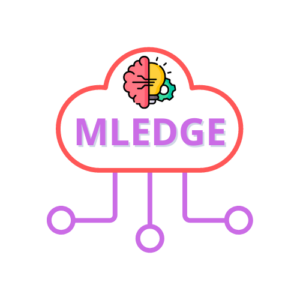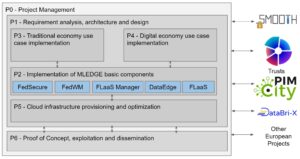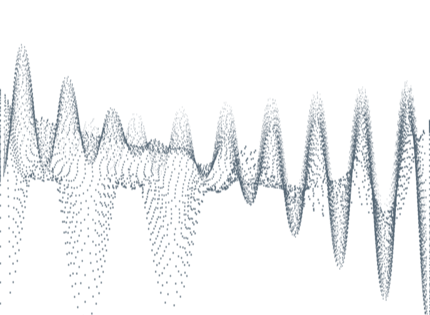
MLEDGE: Cloud and Edge Machine Learning
IMDEA Networks is the beneficiary of this project.
Financed by: Ministry of Economic Affairs and Digital Transformation, European Union NextGeneration-EU REGAGE22e00052829516
Duration: January 2023 to June 2025
Contact: Nikolaos LAOUTARIS, Principal Investigator for IMDEA Networks
Objectives:
Data-driven decision-making powered by Machine Learning (ML) algorithms is changing the way society and the economy work, and is having a profound positive impact on our daily lives. In fact, ML applications are becoming even more ubiquitous and integrated, often invisibly, into our daily activities, having a direct impact on things like how we find our way around a city, how we decide what to buy or where to eat, while at the same time we can keep ourselves safe from financial fraud, or have tools that remind us to take medication or suggest new personalized habits for a healthier lifestyle.
However, for ML-based solutions to be effective at such tasks, data often has to be processed close to the end user. Furthermore, such data may be private and of a confidential nature. Distributed Learning and, in particular, Federated Learning (FL: Federated Learning) emerges as a leading paradigm within the ML branch satisfying these two properties. FL has grown in parallel with the expansion of cloud to the edge (CloudEdge) but, interestingly, both paradigms have mostly developed independently, despite their natural parallelism and potential synergistic gains.
In this project, Cloud and Edge Machine Learning (MLEDGE), we will work to reverse this trend by deploying FL as a standalone but optimized cross-industry layer on top of CloudEdge, using real-world data and applications to demonstrate that this synergy can produce great benefits for all. MLEDGE aims to enable a thriving ecosystem of secure and efficient ML edge services capable of facilitating the use of sensitive personal and B2B data to train ML models for consumers while protecting the privacy of the data and its owners. Recent studies in the field of the “European Data Strategy” estimated that the data economy will reach an impact of 827 billion euros for the EU27 as early as 2025. However, even today privacy concerns and property hinder their full development. MLEDGE will be instrumental in increasing these projections in the period 2025-2030.
Technical / Scientific Objctives:
For that purpose, the project has stated the following technical objectives designed to address the key challenges of FL in the cloud edge:
- Design a framework and components to deploy federated learning as a service (FLaaS) at the cloud edge.
- Design and develop security solutions (FedSecure) against poisoning or inference attacks launched from rogue clients and/or “honest but curious” aggregation nodes.
- Manage the challenges of data portability at the network edge (DataEdge).
- Create a watermarking (FedWM) scheme to protect against redistribution of data or metadata exchanged between clients and services in FLaaS.
- Create an economic and business logic layer (FLaaS Manager) that implements fair distribution of costs and revenues between parties contributing to training ML models.
- Optimising costs of ML services in the cloud edge by monitoring, predicting and allocating compute jobs intelligently and in an energy-efficient manner.
Architecture:
The diagram shown in the figure below summarises the architecture and the blocks proposed to be developed during the duration of the project.

Figure 1. MLEDGE architecture
MLEDGE will work on three separate layers:
- MLEDGE Infrastructure layer provides the computational and communication resources. It can include resources at different levels of the network, including “centralised” public or private clouds in the cloud core, compute nodes at the cloud edge, and even edge computing at the users’ home or devices.
- MLEDGE Service Layer will integrate a number of components that enable FLaaS services at the edge of the cloud, including innovative functionality that will result from developing its scientific objectives.
- MLEDGE Use Case Layer includes real use cases from enterprises in the traditional and digital economy, as well as a specific cloud infrastructure optimisation use case. The use cases will seek to demonstrate the use of federated learning at the cloud edge and MLEDGE components in real scenarios and with real data. To this end, during the first six months of the project, a company screening has been carried out and tenders looking for external Spanish companies to help in developing three use cases have beed issued o public procurement.
Work Packages:
MLEDGE stands for Machine Learning (ML) in the cloud EDGE, and it aims to implement federated learning (FL) as a standalone but optimised cross-industry layer on top of the edge of the cloud. For that purpose, the project is organised in 7 work packages. P0 covers project management tasks, while the ongoing P1 intends to define the requirements of use cases and design the architecture and components of this project. In addition, there are 4 technical work packages (P2-P5) to develop those components, and a last work package P6 that will deal with the demonstration of use cases and proofs of concept developed in the project, as well as with dissemination and exploitation of the results produced by MLEDGE. MLEDGE will build on top of lessons learnt and components developed in previous related European projects such as PIMCITY, SMOOTH, DataBri-X or TRUSTS.

